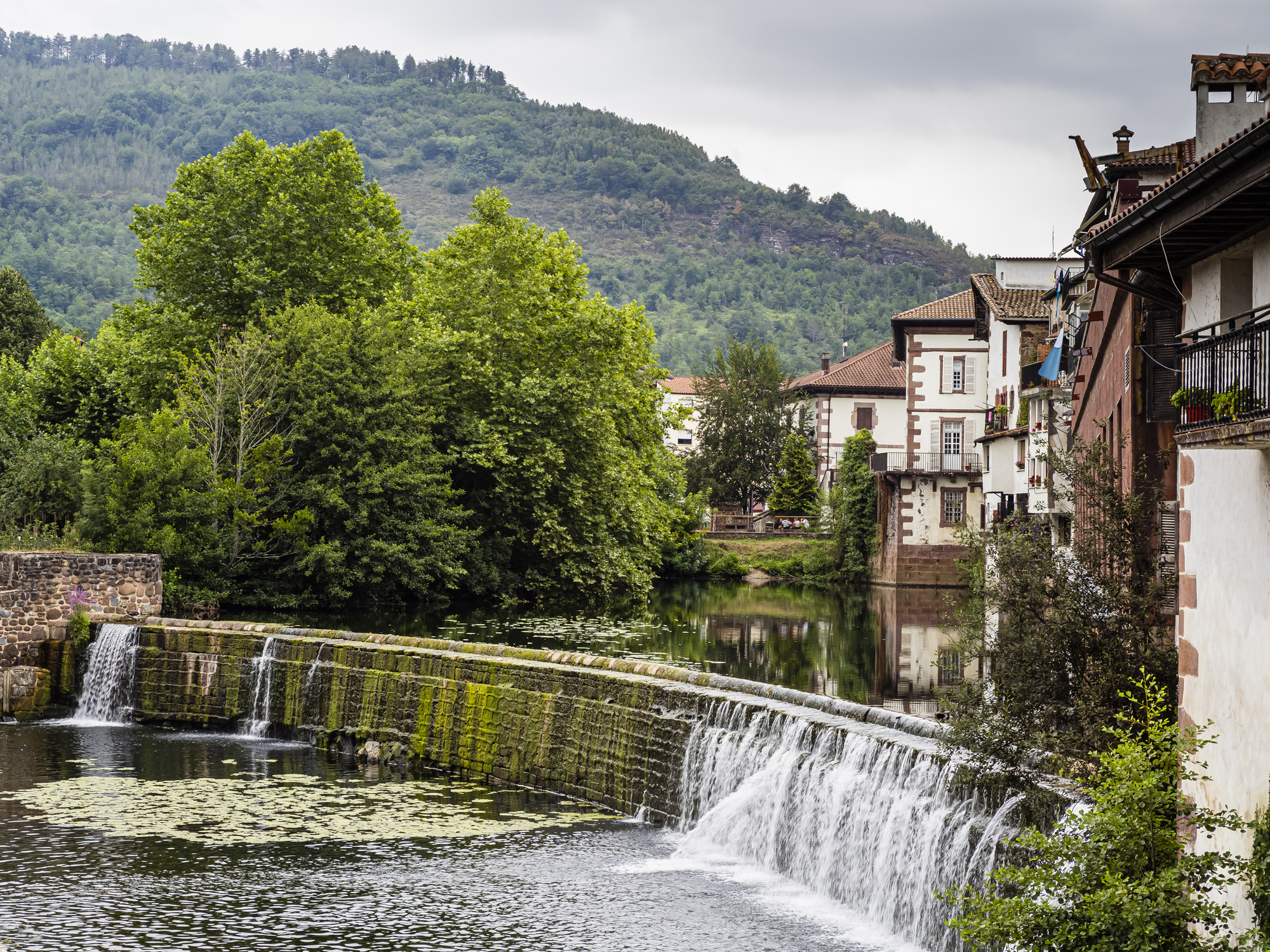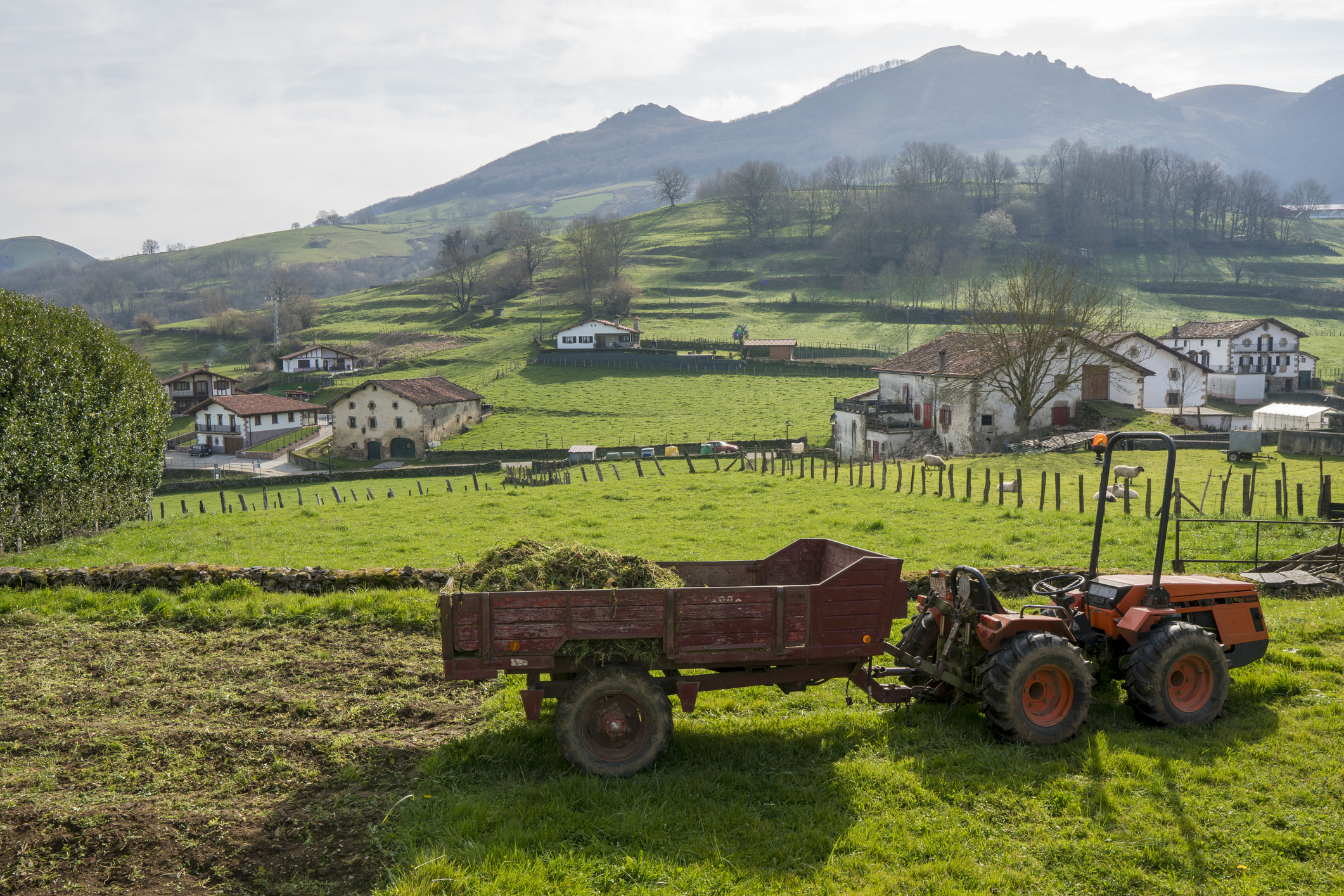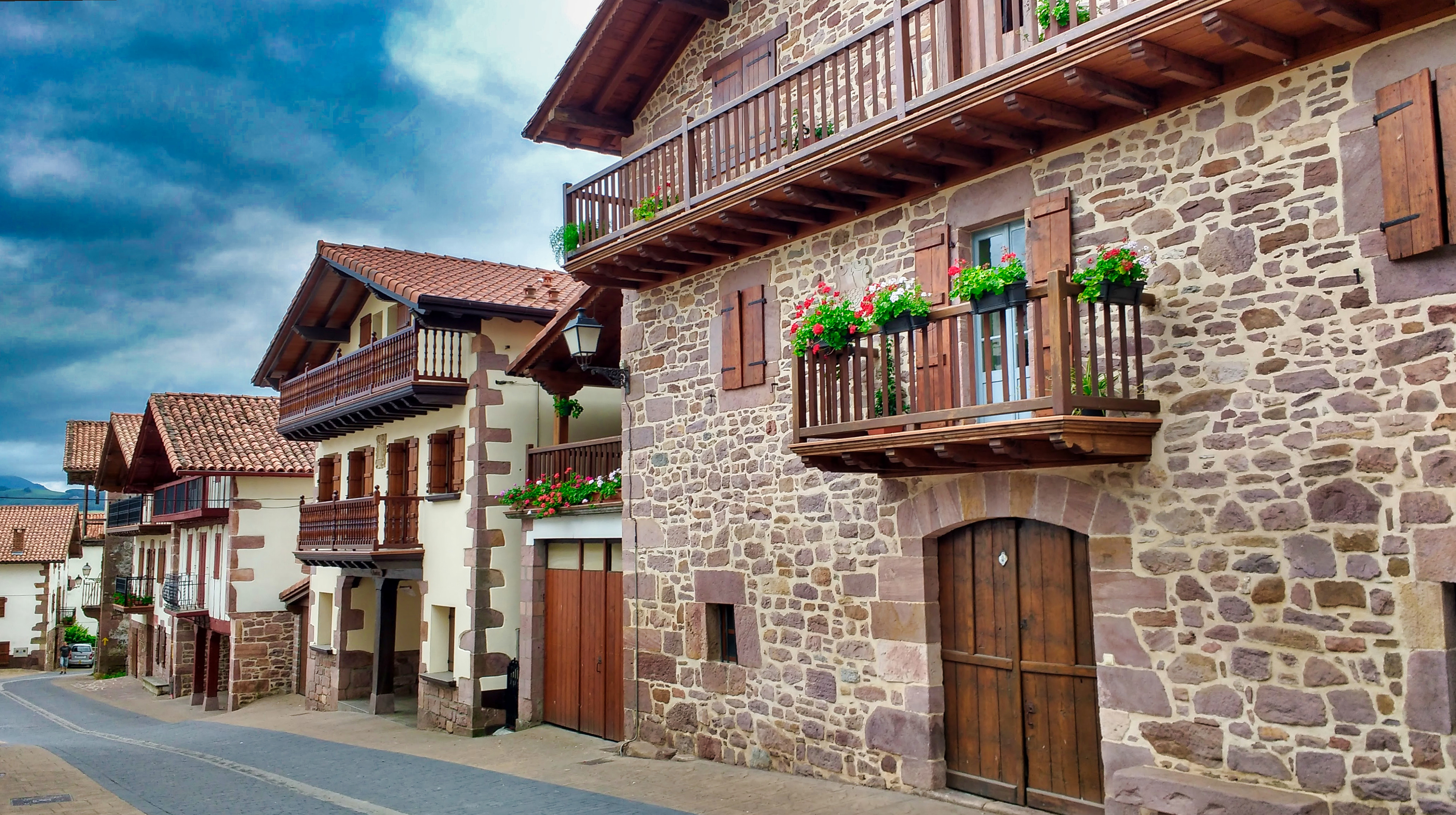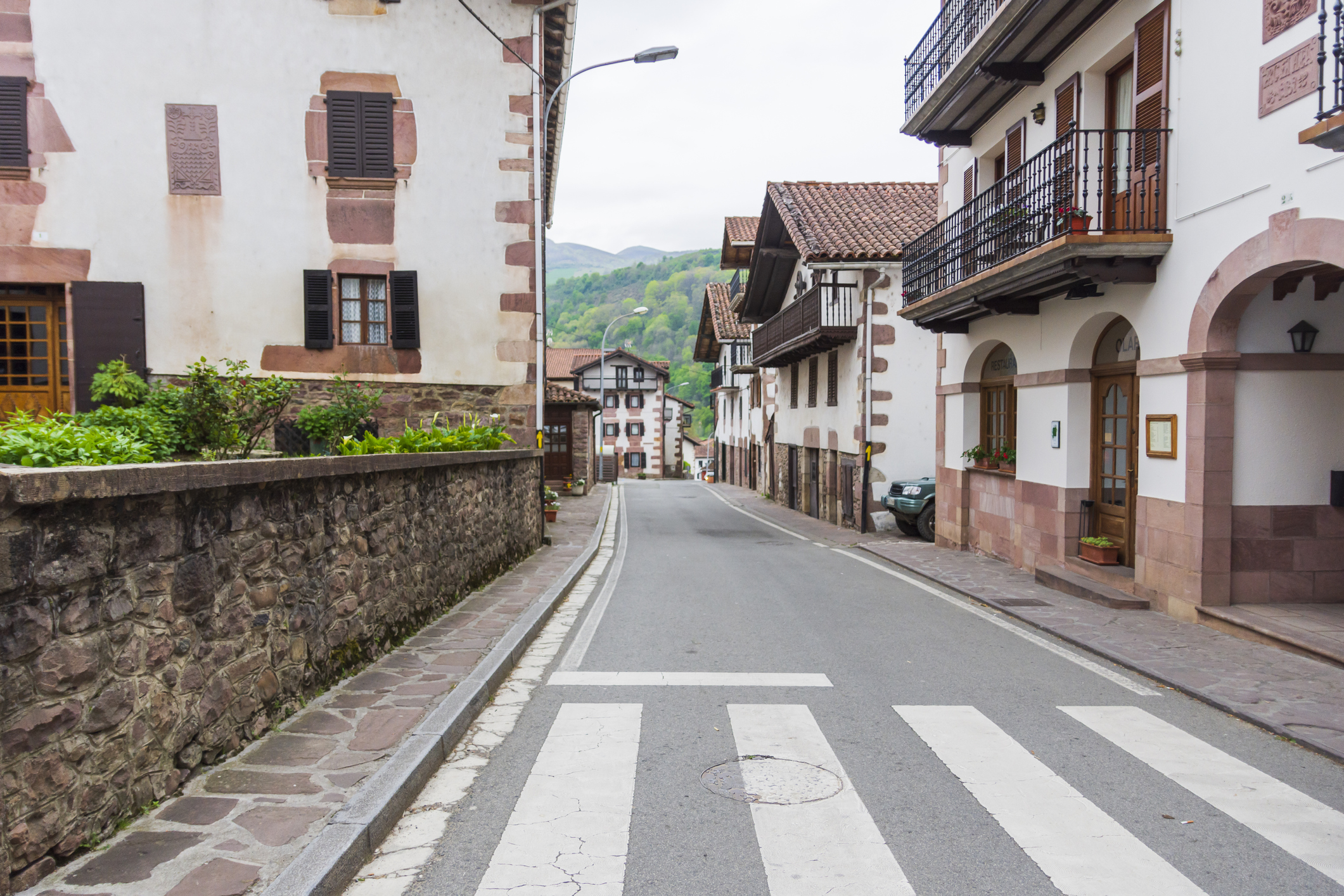This idyllic Pyrenean region in the north of Navarre – just 45 minutes to an hour north of Pamplona – is dotted with green meadows and hamlets, and known for its hiking trails and spectacular natural treasures and landscapes. Dubbed “the Switzerland of Navarre”, it also has plenty of historical and cultural importance, as well as an association with the famed Way of St. James.
Here among other things you can find towering peaks, impressive waterfalls, gorgeous lakes and streams, water mills, small flocks of grazing sheep, and as we mentioned, a number of charming and historic towns. And here are several of the most outstanding.

Elizondo, the Valley´s Capital
Located between lushly forested mountains, crossed by the Bidasoa River, and comprised of a mix of townhouses and traditional farmhouses, this town of around 3,600 with a recorded history going back to 1025 is one of Navarre´s most beautiful. It´s perfect for strolling, taking in landmarks such as the Baroque Palace of Arizkunenea; the Plaza de los Fueros; the neo-Gothic Church of Santiago Apóstol (St. James the Apostle), built in the 1920s to replace the 13th-century original which was irreparably damaged by flooding; and a museum devoted to the valley´s customs and culture. There are a number of fine places to overnight and, of course, and chocoholics take note: a local speciality is hazelnut chocolate – the best in Navarre, they say.

Berroeta: Charming and Farming
At the foot of 710-metre (2,329-foot) Mount Abartán, dotted with dolmens and cromlechs left by megalithic peoples, this bucolic village of just over 120 souls once lived off farming and cattle-raising, but now the locals work mostly in timber and coal mining. Its green meadows, traditional townhouses, magnificent farmhouses, and 16th-century Church of San Martín provide a charming backdrop for an idyllic sojourn in a bygone era.

Enchanting, Aimiable Amaiur
Close to the border with France and also tiny – although with around 300 residents more than twice the population of Berroeta – Amaiur (also known in Spanish as Maya) is another charming throwback, with its little stone-and-woodbeam houses. Highlights include the ruined 16th-century Amaiur Castle, the 17th-century Borda Palace, and the 18th¡century watermill (whose proprietors are reportedly available to give a guided village tour).

Inviting Irurita´s Aristocratic Insignia
The Baztán Valley´s second largest town after Elizondo (around a whopping 800) is known for its townhouses which are blasonadas– meaning adorned with coats of arms and other aristocratic insignia. These include the Palacio Jauregía, a 16th-century Barque affair attached to a medieval tower, and the Dorrea House-Tower, one of Navarre´s oldest and former residence of the lord of Baztán. Irurita also has a nice 18th century church, San Salvador, and a medieval tower to which a Baroque building was added. And you shouldn´t leave town without Restaurante Olari, with tasty homemade fare, a reasonably priced menu of the day, and inspiring mountain views from the dining room.

Erratzu Mountain High
In the valley´s northeast, not far from Amaiur and up at an altitude of 672m (2,205 ft.), this village of some 650 souls is surrounded by a soaring mountainscape with incomparable panoramic views. In addition, visitors can visit a number of venerable palaces such as Cabo de Armería de Apeztegia, Etxebeltz, Etxenike, Hualde, and Iriartea. A local speciality is woodworking, with plenty of fine articles available for sale, and another is mushroom picking. On the more active front, the hiking, fishing, and horseback riding hereabouts are superb.
For a small-town mountain idyll, Navarre´s Batzán Valley delivers the goods. Get more info in English at VisitNavarra.es and in Spanish at ValledeBaztan.com (in Spanish), and check out our fares to Pamplona!
Image : JESUSDEFUENSANTA ; Ana del Castillo ; Miguel Carro Pombo; IMAG3S ; Ana del Castillo; snezhanamayorova;

